Sarajevo instantly pulled me in. It’s not one of those cities that needed time to “grow on me” or left me undecided about whether I liked it or not. From the moment we stepped out into the old city, it had me. And I willingly let it.
One of the downsides of travelling full-time is that you can sometimes take what’s around you for granted. See enough thousand year old cathedrals and it’s just another day in Europe. Yet there’s those times when you witness something so incredible, it slaps you right across the face and reminds you of how much beauty there is in this world that it hurts.
I didn’t expect to be so taken by Sarajevo. But there I was, breathless.
Here are ten things to do in Sarajevo you can’t miss.
Table of Contents
1. Visit “The Street Corner that started the 20th Century”
If your school education about the First World War started with “WWI took place between 1914 and 1918,” like mine, you might be surprised to learn that it was actually an event in Sarajevo that triggered the downward descent into one of the bloodiest battles in history.
In events that could be mistaken for some kind of comedy sketch, the heir to the Austro-Hungarian throne, Archduke Franz Ferdinand, and his wife Sophie, were assassinated on a public visit to Sarajevo by a chance shot given to a Serb assassin thanks to a wrong turn off the parade route home. This was after an unsuccessful attempt had already been made on the way there by another assassin who flung a grenade at the couple’s car!
The incident led Austria-Hungary to declare war on Serbia, which in turn led to the declaration of war between the Central Powers (including Germany and Austria-Hungary) and the Allies of World War One (those allied with Serbia and their allies), and hence the First World War had begun.
Today, you can stand on the exact corner that changed the course of history and the world as we know it. For a small fee, head into the little museum on the same corner to watch a short reenactment video of the incident and view some historical artifacts. As the video is silent and there is little explanation in the museum itself, it’s best to read up on this bungled state visit beforehand to get the most out of it.
2. Visit the “Tunnel of Life” AKA “The Place that ended the 20th Century”
Fast forward to the end of the 20th century and the Balkans Wars, and you’ll find yourself in the midst of the Siege of Sarajevo. As a child in the 90’s, I only knew the name Bosnia as one mentioned a lot in the news. While I was going to school and enjoying the outdoors, I had no idea that Sarajevan children my age were spending much of their time in basements, sheltering from gunfire.
Surrounded by Serb forces, the city was under siege for almost four years and would have fallen if it hadn’t been for the secret 800 meter long “Tunnel of Life” that was dug under the UN-controlled airport that separated the besieged part of the city and the free zone, finally allowing the passage of essential goods.
The tunnel was simultaneously dug from the two end points, one of which was from the garden of a courageous family who volunteered their land to be used for the project. The donated family home is now a museum and a 25 meter section of the tunnel still exists and remains open for you to get a small taste of what the hunched over 800 meter journey with 50kgs+ worth of goods might have been like.
While it is possible to reach this site with a combination of tram, bus and foot, it is not the easiest place to find. Taking a taxi or tour is recommended.
3. Head to the Old Town (Bašcaršija)
We’ve been to a few old towns in Europe now, and I can say that Sarajevo’s is one of the prettiest. The unusually designed Sebilj Fountain built in the city square in 1891 is a highlight and is actually an old charity institution. A man would scoop water from the trough and hand it out to the thirsty free of charge. Today the ideals of the fountain continue with anyone free to drink from the ever-flowing taps.
Just by the fountain you can find another iconic image of Sarajevo’s Old Town: pigeons! So used to people, they are not the skittish kind. Buy a container of bird feed from the nearby seller for 1 Bosnian mark and have them perch themselves all over you. Always keen to get a fun photo, Hai hands me 1 mark and says, “I need you to go make a spectacle of yourself in the square.” What’s new.
Tip: Be eco-conscious and return your bird feed container to the seller for it to be refilled and sold again.
4. Visit the Srebrenica Gallery 11/07/95
If you don’t have time to get to Srebrenica in the east of the country yourself, this photo/video exhibition is a must. During the Bosnian War, Srebrenica was the site of one of the most horrific mass murders since WWII. In July 1995, some 20,000 civilians were expelled from the area while more than 8,000 mostly Bosnian Muslim men and boys were killed by Bosnian Serb troops in the space of just a few days. It was supposedly a UN “safe haven”.
The gallery tells the story of what has now been declared genocide by the International Criminal Tribunal of the Former Yugoslavia through the eyes of those who experienced it, as well as acting as a memorial to those who perished.
Entry includes a guided tour, which is worth taking. While the guide does try to explain as best as possible what led to the conflict in the first place for those unaware of what was going on in the region at the time, it’s an extremely complicated history that is difficult to explain briefly and grasp quickly. If possible, I’d recommend reading up a little about the Bosnian War and particularly about the concept of ‘ethnic cleansing’ before visiting.
There is a 30 minute video at the end of the hall that you should definitely take the time to watch. As we had some time before the next tour, we watched the video beforehand. Unless you know about this massacre already, I’d actually recommend doing it this way if you can. Having not been aware of the Srebrenica genocide, this really helped us understand the guided tour better. If you have time before leaving, also listen to some of the stories in the small entry hall near the elevators, interviews from survivors that give more detailed insight into the realities of those days during the massacre and the war at large, and what life has been like since then.
The gallery is on the third floor of a small building to the right of the Sacred Heart Cathedral.
5. Head to the Yellow Fort for the perfect sunset perch
Set up on a hill, the Yellow Fort is the perfect place to view the beauty of Sarajevo from above and enjoy the sunset. During the Muslim holy month of Ramadan, many head to the fort with takeout to break fast where a cannon is set off to mark the end of daylight hours and fasting for the day.
One of the great things about Sarajevo is the mix of religions coexisting peacefully; the fact that you can find different religious buildings in close proximity to one another is relayed to visitors with much pride.
Muslim or not, head to the fort to enjoy the evening meal and view, or just anytime. Entry is free.
6. Take a walk down “Sniper Alley”
Nicknamed “Sniper Alley” during the Siege of Sarajevo, the city’s main boulevard ‘Ulica Zmaja od Bosne’ unfortunately didn’t earn its reputation lightly. With its tall buildings offering an abundance of vantage points for Serb snipers, just attempting to cross the street here was, at the time, a life threatening activity.
Today, with its McDonald’s and chain stores, there’s a completely different atmosphere. While there isn’t much to see, just being able to stand in the street in freedom and safety, is a humbling experience.
Be sure to wander the side streets too. You will no doubt notice the bullet and shrapnel damage around town. It is in these quiet pockets of solitude that you can spend a moment absorbing your surroundings and what happened here in a respectful way.
7. Visit the Town Hall and the “House of Spite”
Sarajevo’s Town Hall is one of the most impressive displays of Austro-Hungarian architecture you’ll find. The Empire’s building efforts in Sarajevo were prolific. Locals often joke that the Austro-Hungarians made more of an impact on the city in 50 years than the Ottomans did in 500.
On the opposite side of the river, you’ll find the ‘Inat kuća‘ or the “House of Spite”. The story goes that when the Austro-Hungarians decided on the site for their magnificent Town Hall, a local resident living there by the name of Benderija, and whose house would be destroyed in the process, refused to leave. After long negotiations, Benderija finally made the monarchy an offer. He’d move if they gave him a bag of gold coins and moved his home brick by brick to the other side of the river. Left with little choice, in 1895 they did just that. The house serves as a permanent reminder of the “stubborn” man in the face of the Empire. It is now a restaurant serving traditional Bosnian cuisine.
8. Consider hiring a guide
We don’t always get guides when we travel, but for some places we really recommend them, and Bosnia and Herzegovina is one of them. Given that the conflict here was relatively recent, most of the current population lived through it. This means that you can almost guarantee anyone you meet will have memories of it. Many people, I’m sure, would want to educate visitors about what happened, but it’s not something you can just bring up with anyone.
Having a guide who was comfortable talking about the conflict gave us invaluable insight we wouldn’t have gotten otherwise. We took a private tour to the “Tunnel of Life” to/from the city center for 10 euros each and it was worth every penny. Our guide was very knowledgeable, shared many personal anecdotes and encouraged questions; I don’t think we stopped talking the whole trip there and back.
In addition, the unemployment rate in Sarajevo is incredibly high, in the vicinity of 40%. So not only will hiring a guide help you understand this incredible city, but you’ll also be helping stimulate the local economy.
9. Try a Bosnian coffee
If you like your caffeine, a Bosnian coffee (Bosanska Kafa) won’t disappoint. Similar to Turkish coffee, only served in a lovely pot with long handle, you can get two servings out of it!
But don’t be fooled into thinking you can find Bosnian coffee all over Bosnia. It’s mostly found in select old towns and Sarajevo’s is one of your best bets with a number of cafes serving this traditional pick-me-up. Best to ask if they have it before taking a seat to avoid disappointment.
10. Take a closer look at the clock tower
The clock tower by the Gazi Husrev Bey’s Mosque can easily go unnoticed above the narrow streets as you pass by. Be sure to look up and take a good look it. But before you start panicking that you’ve horribly lost track of time, this is part of the reason it’s so special. It’s the only public clock in the world to display lunar time!
First references of the clock tower can be found in written records dating back to the first half of the 17th century. In former times, before the general public had watches of their own, the public clock tower played an important role in letting Muslim residents know when it was time to pray and the time of sunset during the holy fasting month of Ramadan. The clock strikes midnight (00:00) at sunset, confusing both visitors as well as some locals unaware of the clock’s history as to why it’s “never on time”.
Of course, daylight hours are constantly changing and this is the second reason it’s so noteworthy. The clock must be wound and adjusted by the muvekit (the official timekeeper) to take into account the position of the sun. This used to require a thorough knowledge of mathematics, astrology and astronomy. Nowadays, we have an app for that. But although the need for the muvekit to make these calculations personally and for the clock tower itself has diminished over the ages, the manual adjusting of the clock still takes place on a weekly basis in a time honoured tradition.
Have you been to Sarajevo? What were your favourite things to do in Sarajevo? If you haven’t visited, would you like to?
Pin me for later!

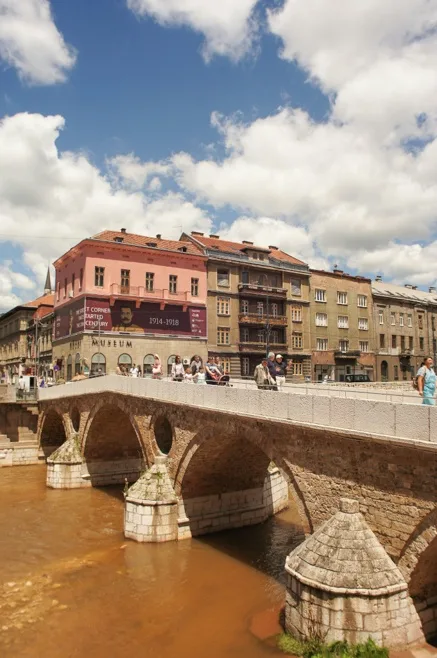
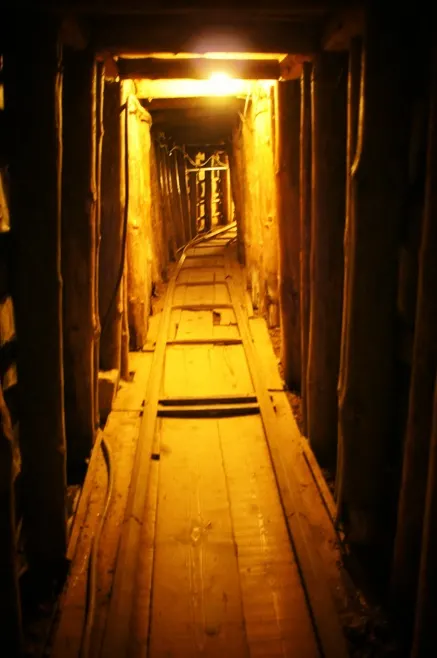
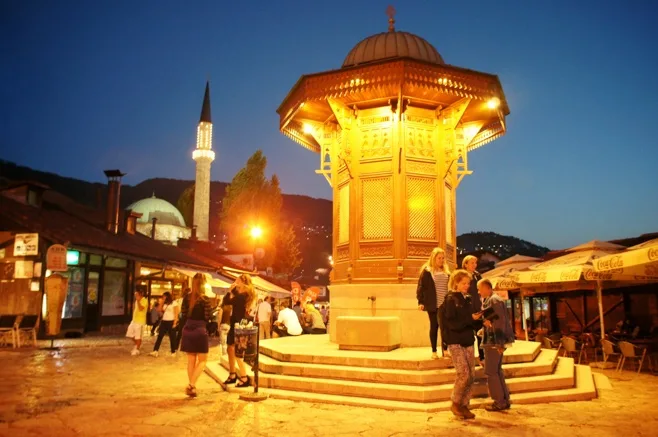
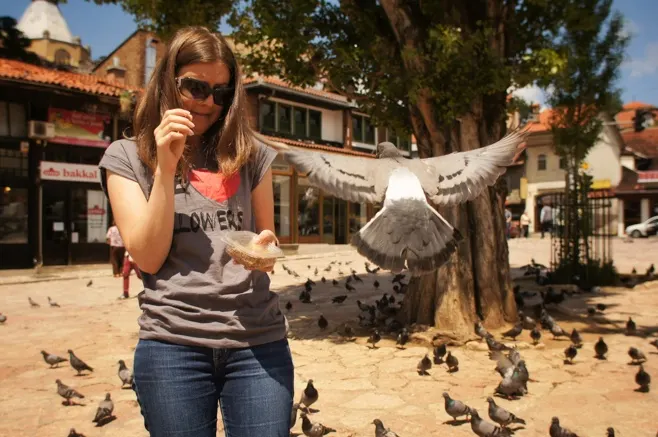
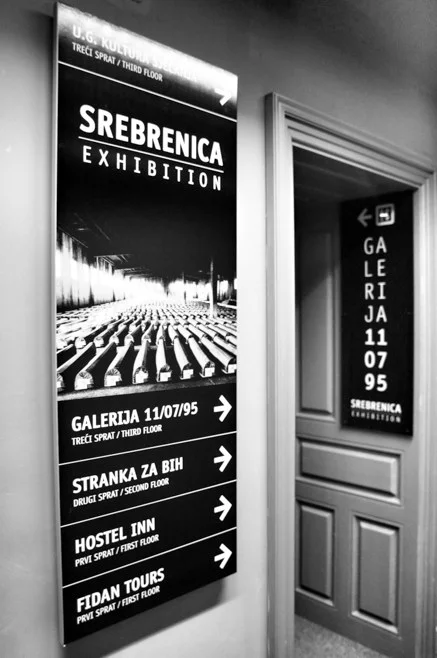
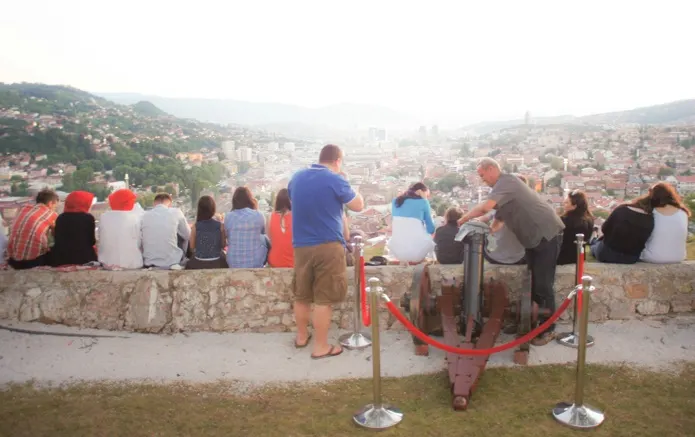
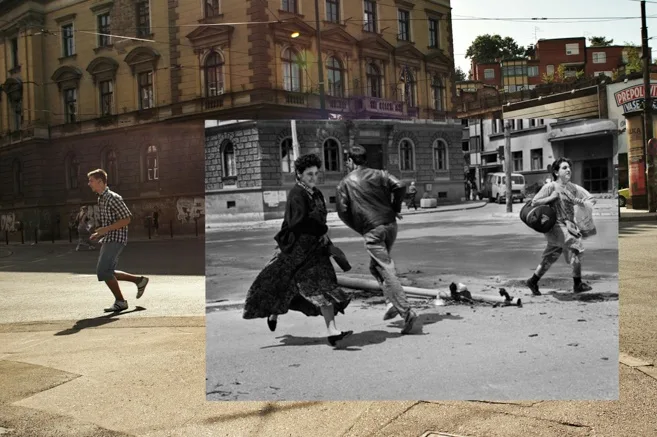
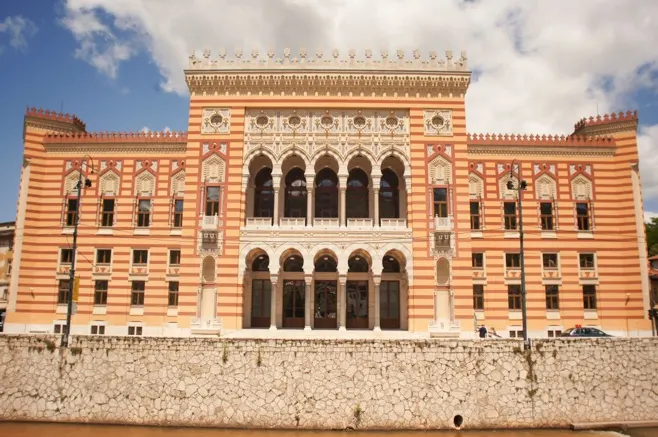
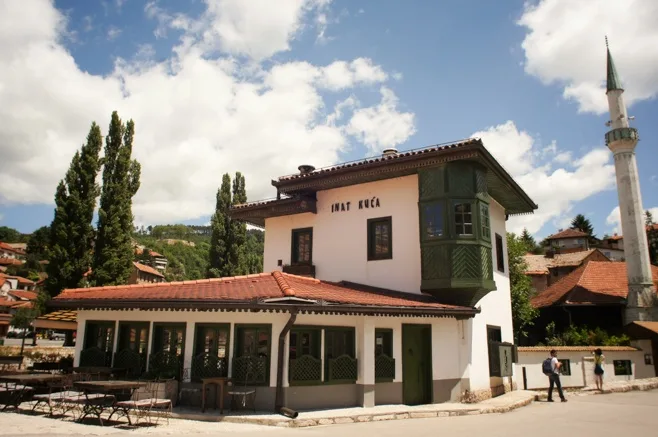
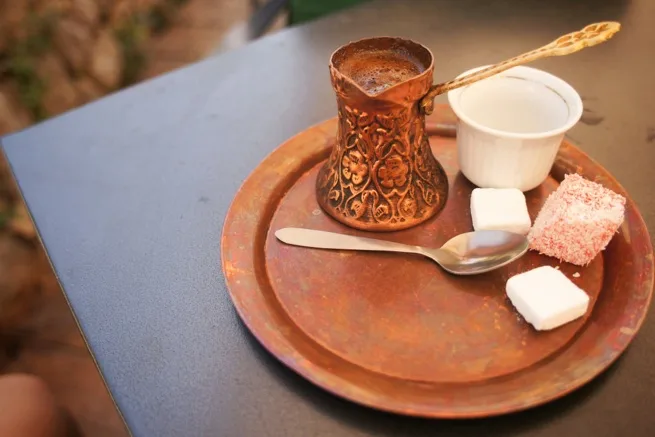
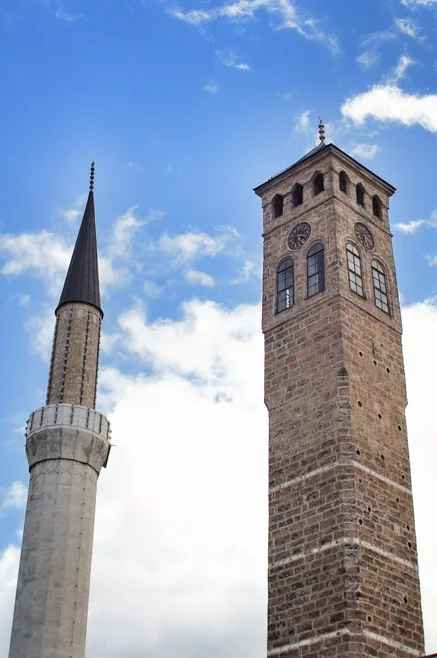
BEST EUROPEAN DESTINATIONS - Part 2 • Creative Travel Guide
Monday 15th of October 2018
[…] Jessica from Notes of Nomads […]
Constance
Wednesday 23rd of May 2018
Thanks for this post Jessica! Very helpful. We re planning to go to Sarajevo next week and we really want to find a guide to show us the city. Where did you find yours?
Jessica - Notes of Nomads
Wednesday 23rd of May 2018
Hi Constance, thanks for reading!
We got a guide through Easy Rent a Car. You can contact them on Skype via easyrentacar sarajevo
Hope that helps and have a wonderful trip!
Renuka Walter
Tuesday 9th of May 2017
Sounds like an interesting city! I am amazed at the beauty of Europe...so much still hidden that's begging to be discovered. I guess I should be adding the entire Balkans on my bucket-list.
Jessica Korteman
Wednesday 17th of May 2017
Yep, basically. Haha Thank you for reading and commenting, Renuka, and happy travels!
Csilla
Tuesday 7th of June 2016
Dear Jessica, what a lovely post. I have a very nice memories about Sarajevo, great place to visit, i wish I could stay longer that time we visited, but who knows one day :) anyway usuful information. Our favorite place was one shisha bar in the center. Sarajevo has his charm, history, lovely people. Definitely must place to visit. Csilla
Jessica Korteman
Friday 19th of August 2016
Thanks for reading, Csilla! Glad to hear you had an amazing visit too. We'd also love to go back - Sarajevo really is a must visit!
paulreeves2014
Monday 10th of August 2015
Hello, Jessica,
Just to reply to your question about the 'cellist of Sarajevo. I wanted to go and see the spot where he sat and played, but I was unable to because he did not stay in 1 place.
The story of how he came to do what he did, is that there was a rocket attack on a group of civilians queuing to buy bread in Sarajevo, during the civil war, and 22 people were killed. The 'cellist, who was a member of the orchestra in Sarajevo, refused to move from his home city when the rest of the players were evacuated for their safety, decided to mark the attack by playing (I believe that it was a piece by Albinoni) in a different ruined building every day for 22 days (1 for each person killed).
I have recently been to Sarajevo, (from July 4th - 11th), and I agree totally with what you wrote about "love at 1st sight"! I arrived at 10.50 p.m. Looking down on the city from the plane, I thought that it looked so beautiful, lit up very prettily, with many different coloured lights, and on waking up the next morning, I went out exploring.
I did take a tram, after having walked towards the edge of the city, down "snipers' alley", but I got out halfway back, as it was very hot and the tram seemed to be getting more and more crowded.
I am sorry that you were not too keen on the cevapi, but I would agree that Sarajevo is a very good place to try it. A restaurant that I could recommend is Sedef, down a little side street, off "snioers' alley", and round the corner, in a cul-de-sac.
They do an excellent dolma (lots of stuffed things, aubergines, courgettes, tomatos, mushrooms, vine leaves, peppers, etc.). If you can stuff it, they will!
I will try not to ramble on, (too easy!), but I was going to go to Sarajevo last year, for the 100th anniversary of the outbreak of World War I, but I decided against it, as I thought that it would be too crowded and expensive (I now realize that I needn't have worried).
However, by co-incidence, I was there for the 20th commemoration of the Srebrenica massacre. In addition to that, you may have seen on the news that there were 136 more bodies discovered shortly before that anniversary. (There are still 1 - 2,00 people missing.). The coffins were loaded on to a container lorry, draped with the Bosnian flag, and moving at about 1 m.p.h.
The streets were closed, and a procession followed the lorry, stretching from side to side of "snipers' alley", all the way down to the Presidential Palace, which is near the Eternal Flame memorial for World War II, which might as well apply equally to the civil war.
I walked behind the lorry with thousands of other people, some openly crying, but there was no sound, no shouting, no slogans, no banners, just more and more people joining as time went on.
I could not just sit in a bar having a beer or a coffee whilst this was going on, so I joined them. When the procession stopped outside the Presidential Palace, however, I did not feel that I belonged there, and left the scene.
I told the receptionist at the hotel I was staying at, and they were pleased that somebody from outside their country had bothered to pay their respects in that way. Clearly, it it something that is still very raw and real, after only 20 years, and it was a truly moving experience for me.
I realize now that despite my promise not to ramble on, that is precisely what I have done! It is so easy, and I have not yet touched on all the other things that I did and tried when I was there. It is truly a magical, very special place, not least because of the qualities of those that live there now, who have been through an experience that most of us have been lucky enough to avoid.
I will end now, and thank you for providing me with the trigger to set me off rambling and reminiscing. The Balkans are a fascinating part of the world, and mercifully as yet unspoiled by too much tourism.